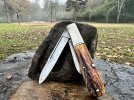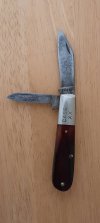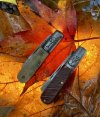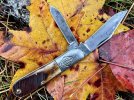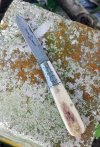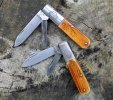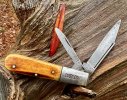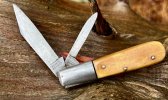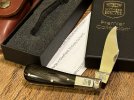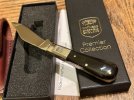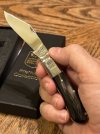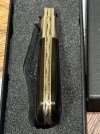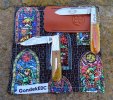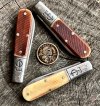Congratulations Augie

The stamp is 1760, which was the original mark of Luke Furnace (the spelling of names changes commonly in England in this period) in 1787. The '1760' mark appears to have been used by his forebears, most recently by the second Matthew Furness, who died in the first decade of the 20th century.
In the late 1880s, Furness Barlows were shipped to the US by Sheffield cutlers B.Worth & Sons. After the introduction of the McKinley tariffs, they looked for other markets.
According to papers in the Hawley Collection (Sheffield Museums) cited by Geoffrey Tweedale:
"All members of the family, father, mother, and children - even at eight years of age - took part in the work. The covering of the scales of these knives were usually made of bone, sawn to size and shape, without any further filing. They were then dyed a very deep purple in a bath made from a decoction of logwood chips. After drying, the scales were pinned to the metal parts."
Your knife could be as old as the mid 1870s Augie

